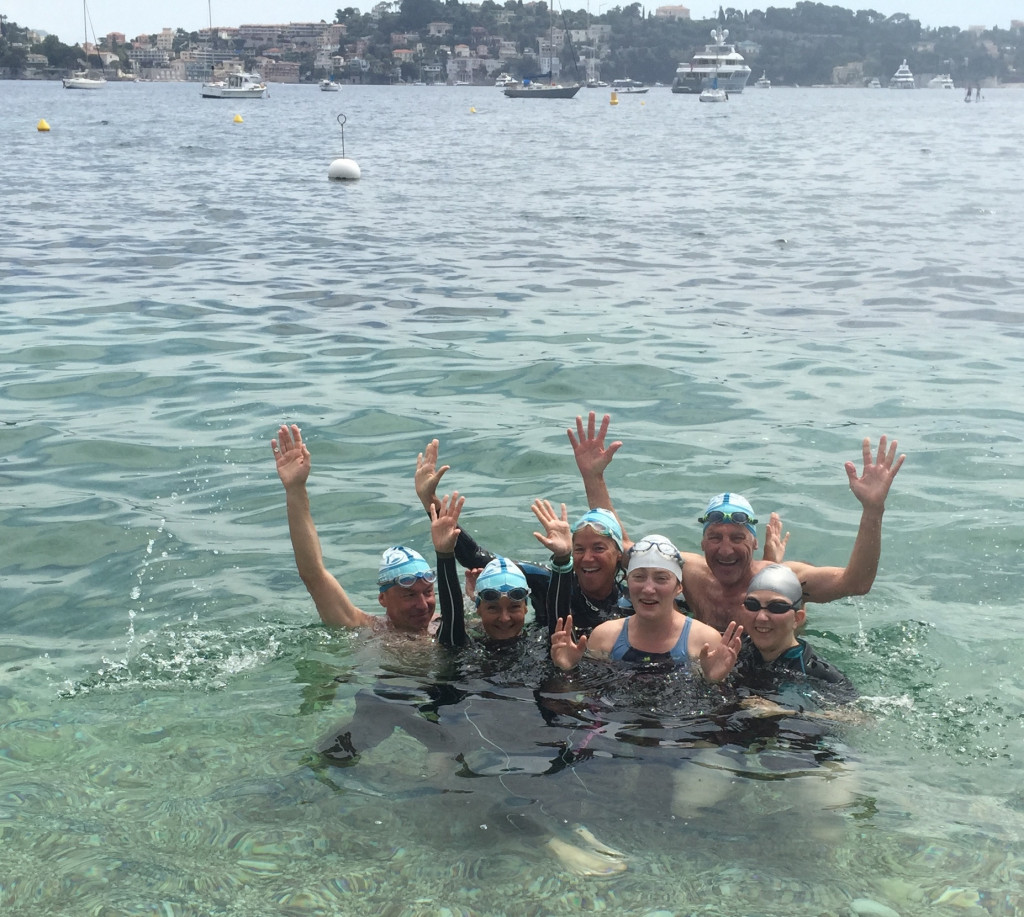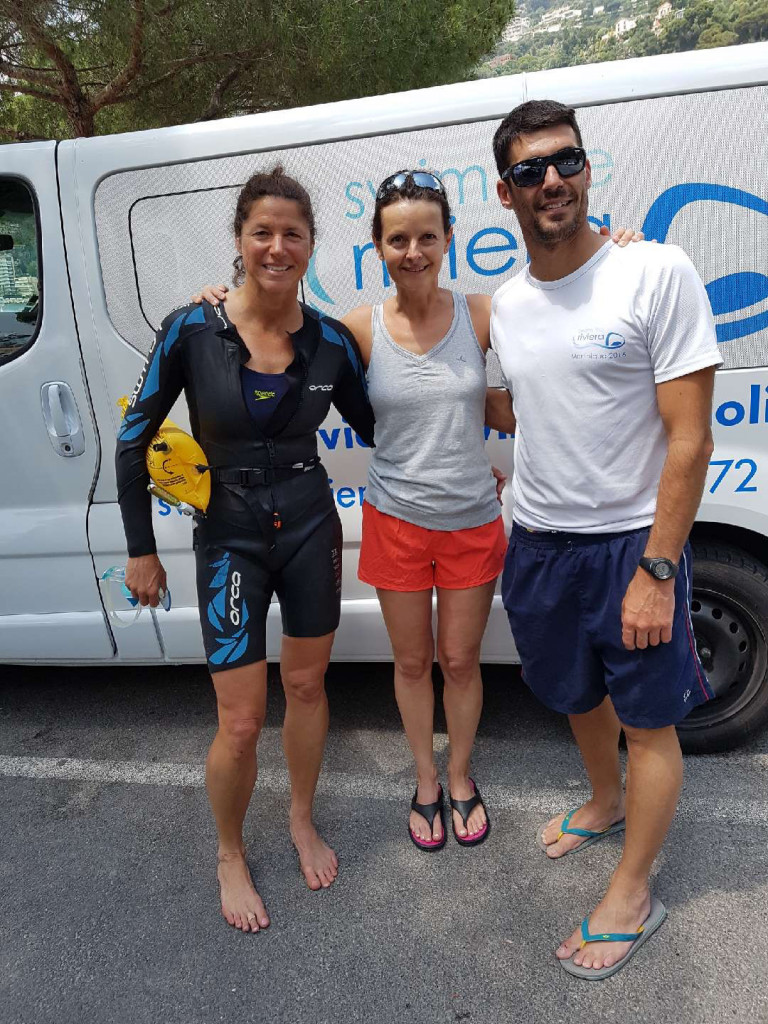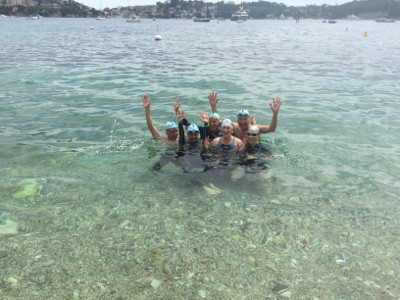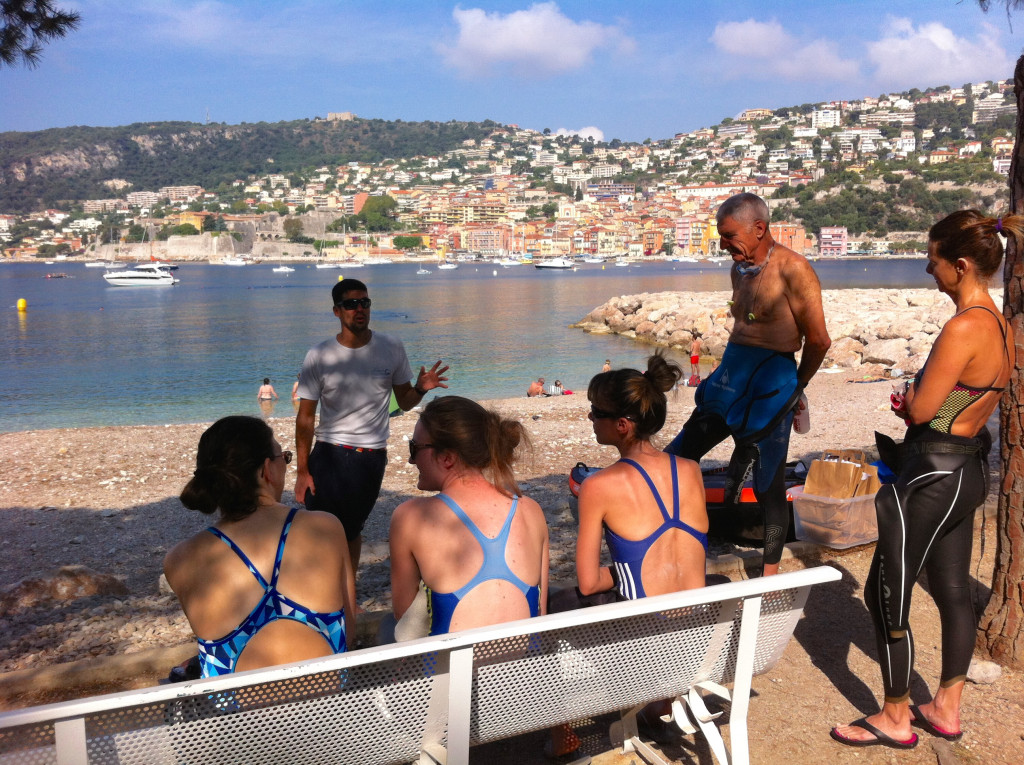
Trainer’s background: Loïc Branda, former French Open Water World Champion, several times Champion of France and 5th at the World Championships. “I can offer my experience and knowledge to athletes who want to improve their swimming in a natural environment for a specific event, like a 5k swim, a triathlon, a swimrun or just for fun.”
Type of workout: Technical training exclusively swimming in open water, in the sea, with waves, and using all four swim strokes – freestyle, backstroke, breaststroke and butterfly.
Who’s the workout for: “I train all types of swimmers, from those who want to learn to perfect the crawl to those who want to cross Channel.”
Preparation for endurance sports, general public who wish to improve their swimming, triathletes, swimrunners, swimmers in swimming pool who want to try in the open water. Non-swimmers preparing for a crossing
What equipment do you need: Depending on the time of year, a wetsuit (combi, in French) or bathing suit, goggles, swim cap. An inflatable safety device, the RESTUBE, is provided to each swimmer, which can also act as a life preserver.
Cost: Private lessons at €50/hour. Five-day course €650 and €310 for a three-day technical session (prices do not include travel or accommodation).

During the weekend of the Riviera Water Bike Challenge (RWBC) in June, in support of the Princess Charlene Foundation, I was, thanks to a gift from my husband, participating in a three-day open water technical swim course in Villefranche.
It seemed appropriate, as the Princess Charlene of Monaco Foundation was set up to address “one of the greatest silent killers on our planet” by teaching children essential water safety skills and how to swim. According to the Foundation, drowning “claims a life every 85 seconds”. The World Health Organisation states “drowning is the third leading cause of unintentional injury death worldwide, accounting for 7 percent of all injury-related deaths.”
While I consider myself a strong open water swimmer (currently I swim 25-35 kilometres a week in the Med), the other six in my group were of varied levels and ages. Francis was preparing for the Monte-Cristo 5km in Marseille; Jean-Luc, had signed up for the Alps Man Triathlon XXL in Annecy; Valerie, a member of the Nice swim club who, like Nathalie, wanted to gain confidence in open water; and Cecile, who, traumatised by a childhood incident, was so afraid of the water that until five years ago she couldn’t even walk along the seashore.
“After thirty years, I finally put a foot in 5 centimetres of water thanks to the team at ‘Foot in the Water’, who specialise in helping those with fear IN the water.”
There is a distinction, as Cécile points out, between fear IN the water and, more commonly, fear OF water.
Fear of water – or aquaphobia – has more to do with getting wet or splashed. For example, people who may not feel threatened by the sea or a bathtub but cannot put their head under a shower. Whereas, fear IN water is an imminent feeling that one will die immediately in the water.
By February 2015, Cécile, still with Foot in the Water, started to discover swimming in the sea using fins, a mask and snorkel, and by August of that year, she did her first course with Swim the Riviera in Monaco. “I could never have done it without the safe and caring attitude of Loïc,” Cécile explained.
“I had to push myself to swim in the sea without the specialised framework of Foot in the Water and I’d get back in the boat as soon as I’d had enough swimming. I discovered though that I could feel at one with nature and became addicted to open water swimming.
In September 2016: Cécile completed her first open water event the 2km Prom’Swim, and will this September attempt the 5 km distance. She wants to become a master swimmer and now co-animates the Foot in the Water program.
Run by former French Open Water World Champion Loïc Branda, Swim the Riviera offers a 5-day discovery course (which includes Monaco, Cap Martin, Cap d’Ail, Cap Ferrat, and Cap d’Antibes) in addition to technical 3-day sessions in Villefranche and Monaco.
Our three-day Swim the Riviera course was divided in two morning and afternoon sessions, with a long lunch at a nearby restaurant included. We wear wetsuits, but in July and August, you wouldn’t need to.
The first two days, we used Plage de l’Ange Gardien, at the far end of the Marinières parking lot, as our base, and working individually or in groups of two, there were lots of unique exercises and personalised observations. The views of Villefranche from the water are stunning.
The second day, participants are filmed swimming so they can see their technique, strengths and weaknesses. And there’s a mini-talk about nutrition, followed by more practice. By the third day, the group have become bosom swim buddies for life. From the Plage de la Darse, with its easily marked buoys, it’s a morning to put into practice all of Loïc’s advice.
Regardless of your level, you will finish Swim the Riviera a better, more confident swimmer. I went on to do the ÖTILLÖ Isles of Scilly Swimrun, which included 8 km of open water swimming in the Atlantic, with two long swim segments of 2km and 2.5 km in 12°C water. Loïc’s words echoed in my head when fatigue kicked in and I needed to stay focussed.
Like Cécile, I would encourage any of you who have never ventured beyond a swimming pool to give open water swimming a try. “Loïc knows how to adjust his technical advice and progression of swimming distances in total safety,” Cécile shared. “And if I felt safe, everyone should be able to feel safe!”
As for me, Swim the Rivera was the most thoughtful and practical birthday gift ever.
Article first published July 7, 2017.

